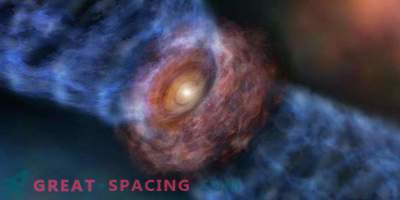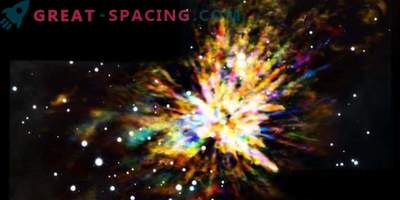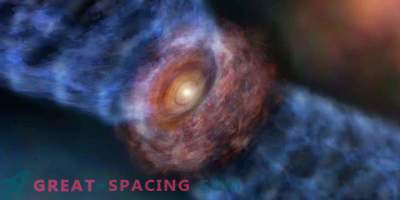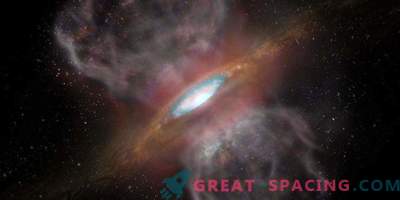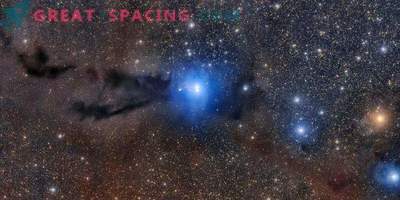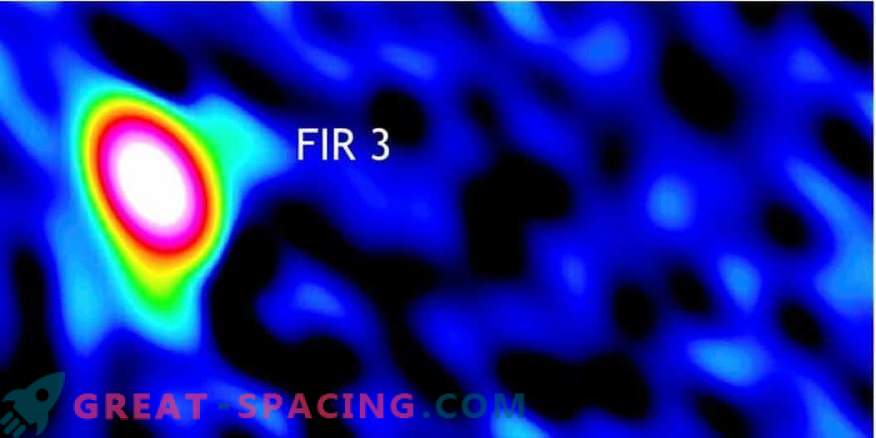
A FIR 3 Protostar (HOPS 370) has an outflow that can lead to the formation of an earlier FIR 4 (HOPS 108) star, indicated by a red dot. Located in the birth zone of Orion stars.
Scientists used the Very Large Antenna Grid (VLA) and found new information about a jet of material moving at high speeds. It is believed that he was thrown away by a young star, because of which a new protostar could have appeared.
This scenario is favored by the orientation of the jet, the distance and speed of the material. About this tells the employee of the Astrophysical Institute of Andalusia Mayra Osirio.
The giant gas cloud is located 1400 light years away in the constellation Orion. This is an active star formation site, so the VLT has already been studied. But recent radio frequency observations have noted new features.
The couple’s picture shows that the youngest HOPS 108 protostar is located on the outflow path of the oldest HOPS 370 star. Back in 2008, it was assumed that a collision of fast-moving material and gas could create a neighboring protostar. Now we managed to identify these nodes of the material and even calculate their speed.
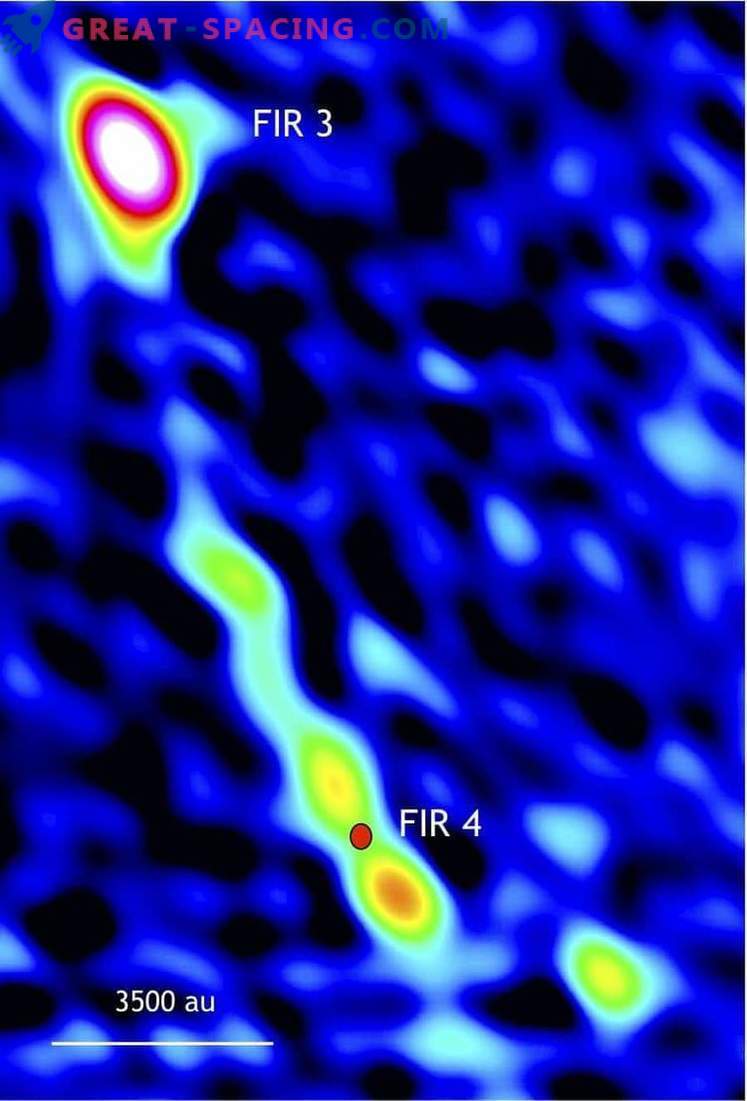
Outflow of a FIR 3 star (HOPS 370) capable of activating the birth of a younger HOPS 108 protostar. Insertion is a separate VLA shot of a protostar
Scientists think that the process started about 100,000 years ago, which led to the birth of a new star. Moreover, in this area there are 4 more young objects that can appear in the same way. But the evidence so far has been found only for HOPS 108.
But there is one problem. The younger star moves too fast, hinting at the origin in another place. True, this movement may turn out to be an illusion created by the outflow of a star. Therefore, we get the answer only after a long observation.
